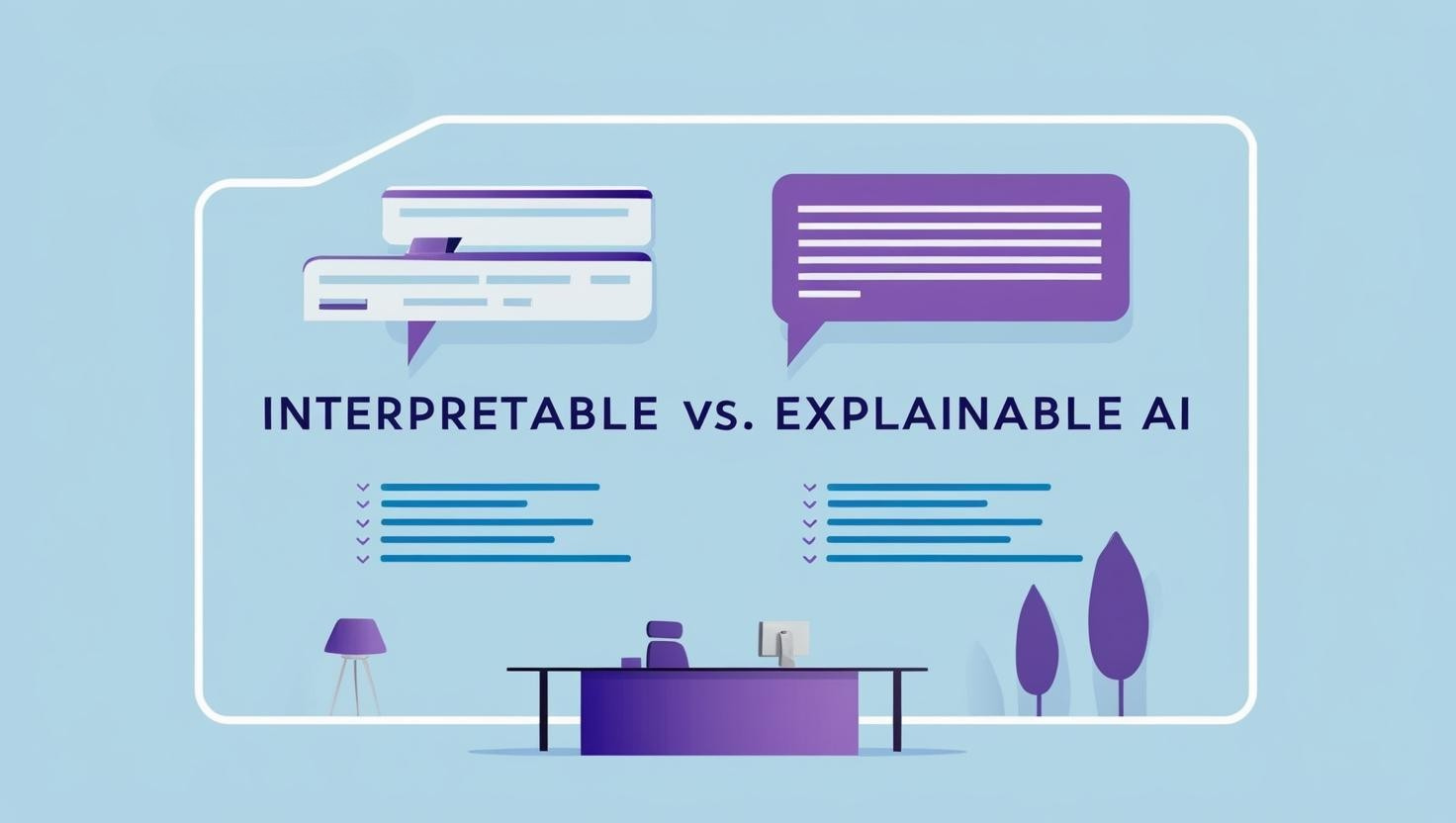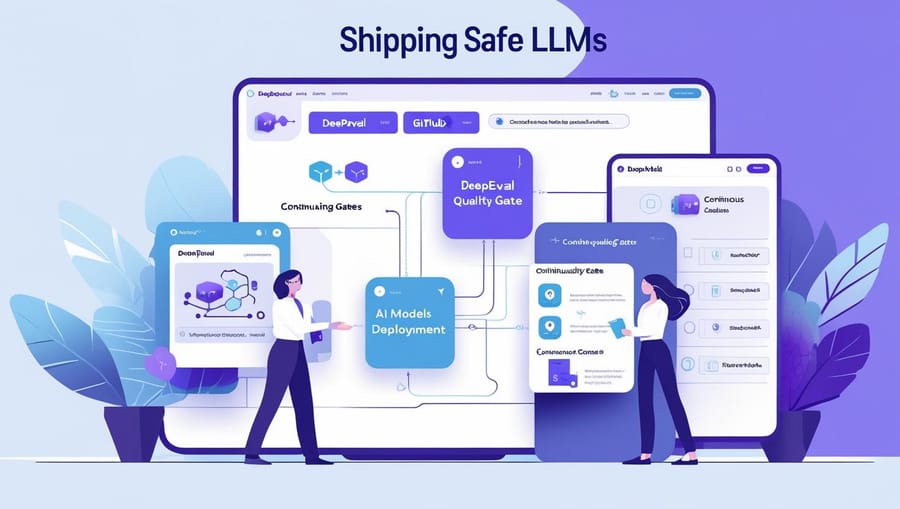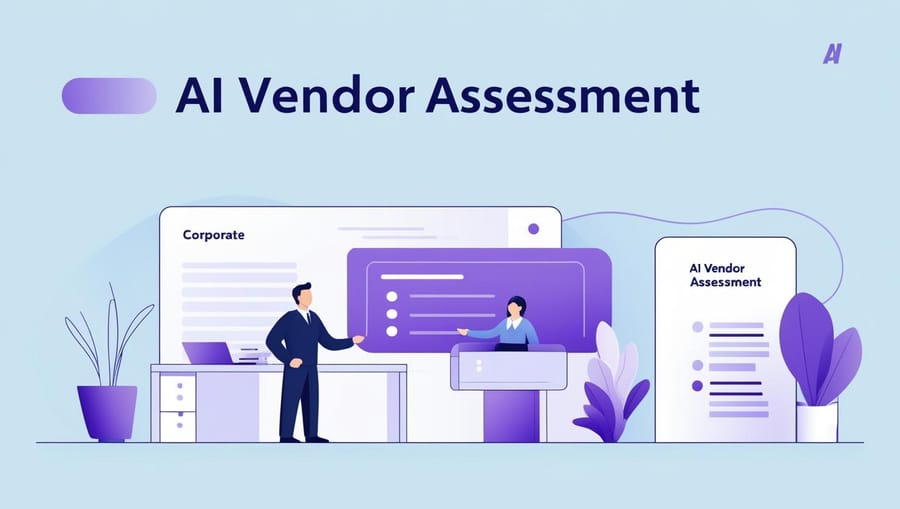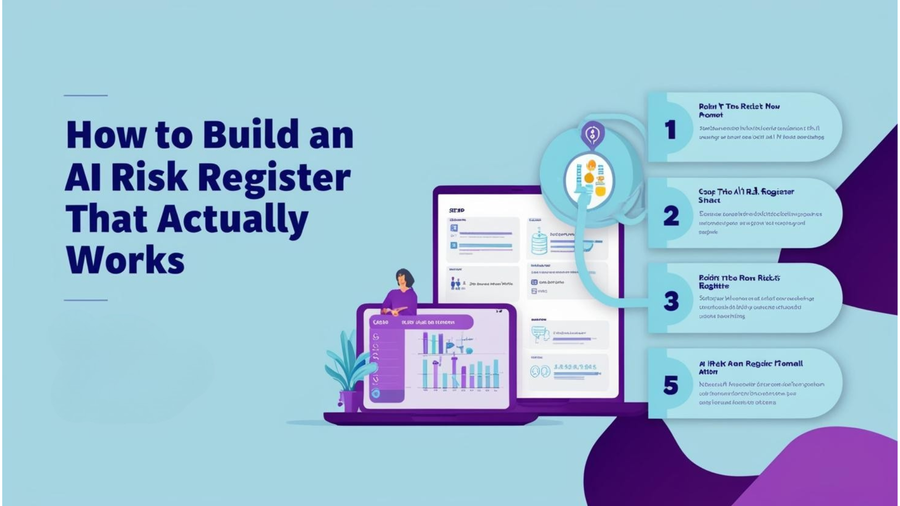AI Transparency: Why It’s a Critical Issue
As AI increasingly shapes decision-making in finance, healthcare, hiring, and law enforcement, the need for transparency is more urgent than ever. But when we talk about making AI more transparent, two key terms often emerge: Interpretable AI and Explainable AI (XAI). While they sound similar, they represent distinct approaches to AI transparency—and understanding the difference is essential for regulators, businesses, and AI practitioners.
With global AI regulations like the EU AI Act and NIST AI RMF emphasizing the importance of AI accountability, enterprises must ensure their AI systems are not just high-performing but also understandable and justifiable. So, what’s the difference between interpretability and explainability, and why does it matter?
1. Interpretable AI vs. Explainable AI: Key Differences
What is Interpretable AI?
Interpretable AI refers to models that are inherently understandable without requiring additional explanations. These models allow users to directly see how inputs lead to outputs without needing external interpretability techniques.
✅ Characteristics of Interpretable AI:
- Uses simple, transparent algorithms (e.g., decision trees, linear regression).
- Provides clear cause-and-effect relationships.
- Requires no external explanations—the logic is visible.
🔹 Example: A linear regression model used for predicting housing prices based on square footage and location is interpretable because the relationship between inputs and outputs is directly visible.
What is Explainable AI (XAI)?
Explainable AI refers to complex AI models (like deep learning) that require post-hoc explanations to make their decision-making process understandable.
✅ Characteristics of Explainable AI:
- Uses complex algorithms (e.g., neural networks, gradient boosting).
- Requires interpretability techniques to explain decisions (e.g., SHAP, LIME).
- Provides insights into black-box models.
🔹 Example: A neural network detecting fraudulent transactions in banking requires XAI tools like SHAP (Shapley Additive Explanations) to show which factors (e.g., transaction location, amount) influenced the AI’s decision.
Key Differences Between Interpretable & Explainable AI
| Feature | Interpretable AI | Explainable AI |
|---|---|---|
| Model Complexity | Simple (e.g., decision trees, logistic regression) | Complex (e.g., deep learning, ensemble models) |
| Transparency | Directly understandable | Requires external explanation techniques |
| Use Case | Low-risk, regulatory-friendly AI applications | High-performance AI models with post-hoc explanations |
| Example | A rules-based AI system for loan approvals | A deep-learning-based medical diagnosis tool |
2. Why Does the Difference Matter?
🔹 Regulatory Compliance & AI Governance
With AI laws like the EU AI Act and NIST AI RMF emphasizing transparency, enterprises must determine whether their AI models are interpretable or require explainability techniques.
✅ Interpretable AI is preferred for high-risk applications where explainability alone isn’t enough (e.g., criminal sentencing AI).
✅ Explainable AI is necessary for high-performance models where complex decision-making is required (e.g., fraud detection AI).
🔹 Example: The EU AI Act mandates that high-risk AI systems must provide clear explanations for automated decisions. Companies using black-box AI must integrate XAI techniques for compliance.
🔹 Trust & Ethical AI Decision-Making
Organizations must ensure AI decisions are fair, unbiased, and understandable—especially in sensitive applications like hiring, lending, and healthcare.
✅ Interpretable AI helps build trust with stakeholders who need clear, rule-based decisions.
✅ Explainable AI allows high-performance models to be audited for fairness and accountability.
🔹 Example: A hospital deploying AI for patient diagnosis must ensure doctors understand how AI arrived at a decision, reinforcing the need for explainability tools.
🔹 AI Performance vs. Transparency Trade-Off
Many businesses prioritize AI performance over transparency. However, regulations and ethical concerns are shifting the focus toward explainability.
✅ Interpretable AI models offer transparency but may lack predictive power.
✅ Explainable AI models deliver high accuracy but require additional explainability layers.
🔹 Example: A finance company using a deep learning model for credit risk assessment must balance performance and explainability by using tools like SHAP to justify loan denials.
3. Best Practices for Implementing Interpretable & Explainable AI
Step 1: Identify AI Model Risk Levels
✅ Use Interpretable AI for high-risk, regulated applications (e.g., credit scoring, medical AI).
✅ Apply Explainable AI to black-box models used in high-performance applications (e.g., AI fraud detection).
🔹 Example: Banks use interpretable AI for credit scoring but leverage explainability tools for fraud detection models.
Step 2: Integrate Explainability Tools for Complex AI
✅ LIME (Local Interpretable Model-agnostic Explanations) – Explains individual AI predictions.
✅ SHAP (Shapley Additive Explanations) – Provides a global view of feature importance.
✅ Counterfactual Explanations – Shows what changes in input data would lead to different AI outcomes.
🔹 Example: A hiring AI tool uses SHAP to ensure no bias against certain demographic groups.
Step 3: Align AI Transparency with Regulatory Frameworks
✅ Ensure AI decisions are explainable as per NIST AI RMF and the EU AI Act.
✅ Adopt documentation & auditing practices to ensure AI accountability.
🔹 Example: Healthcare companies ensure AI models meet HIPAA and GDPR transparency requirements by integrating XAI tools.
Final Thoughts: AI Transparency Is No Longer Optional
As AI regulations tighten and public trust in AI becomes a priority, enterprises must make AI transparency a core component of AI governance. Understanding the difference between Interpretable and Explainable AI is crucial for making informed decisions on model selection, risk mitigation, and compliance.
Organizations must strike the right balance—leveraging interpretable AI for critical decisions while integrating explainability techniques for complex AI models.






